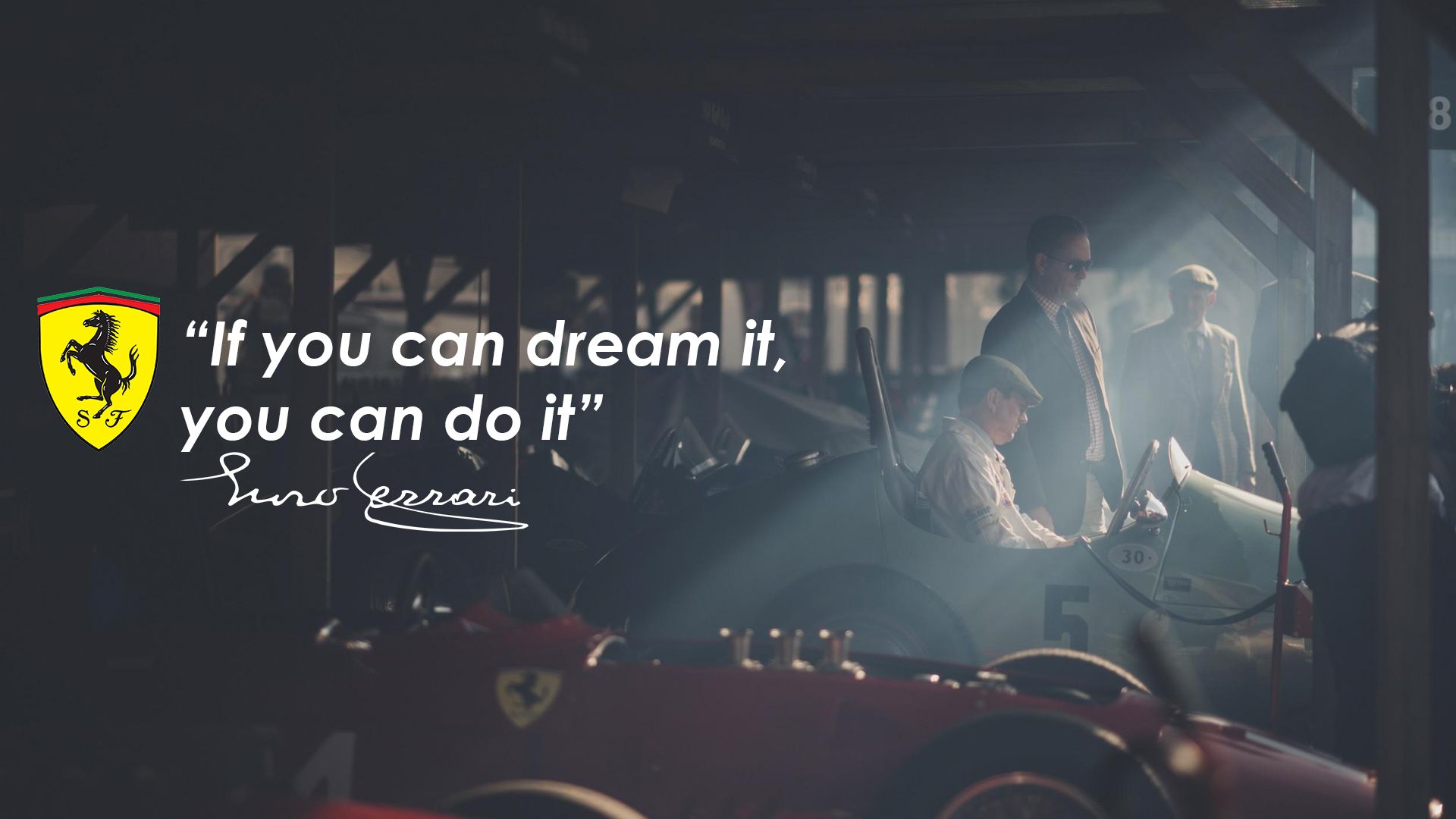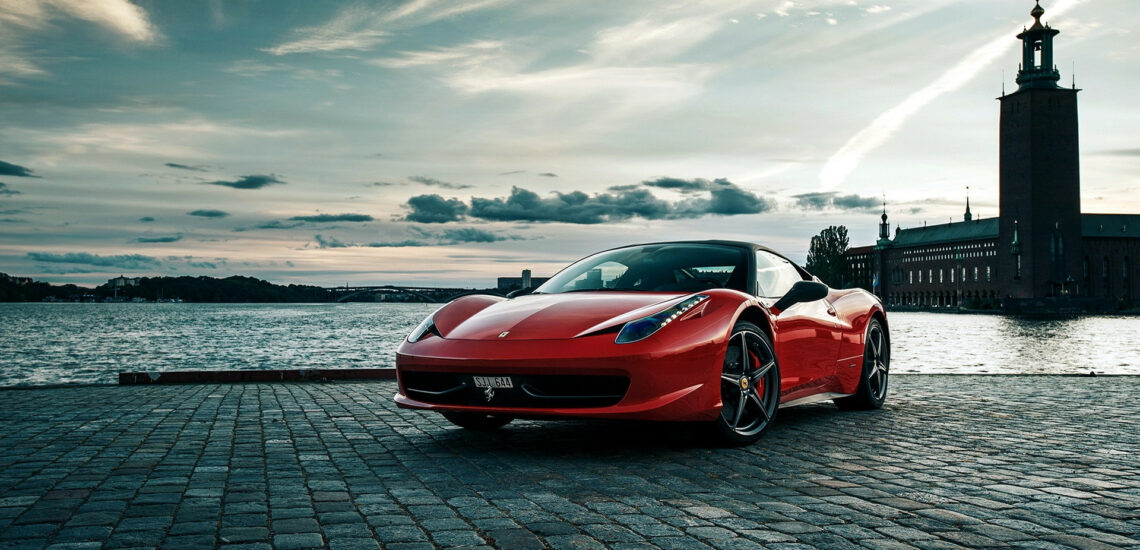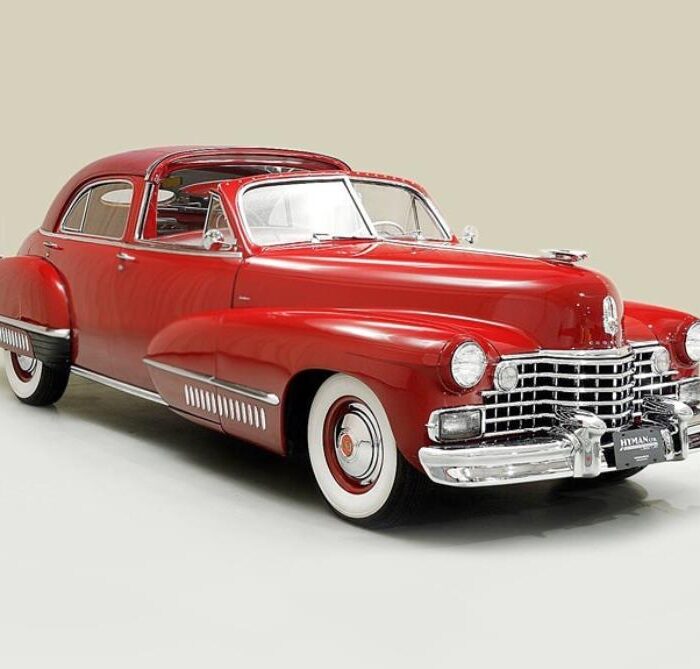All the splendor of Italian luxury is expressed in sports cars of the company Ferrari. For the eighth decade, the world of the automobile industry has been decorated with examples of automotive art that are intended only for a select few and are mostly parked in the garages of emperors and sheikhs, football player Lionel Messi and collector Pierre Bardinon. The brand was also glorified by “the Red Baron” Michael Schumacher. What this brand is and how it appeared, what awaits Ferrari in the future and how things are now – all of the above and more can be found by reading this article. And it all started in the distant 40s of the last century…
The beginning
The biography of the great brand’s founder began trivially – there was a heavy snowfall in the Italian city of Modena. And a son was born in the family of the owner of a locomotive repair shop. That happened either on February 18 or February 20, 1898. The boy grew up right above the rooms where hammers were constantly hitting metal, that is, above his father’s workshop. Of course, even as a teenager, Enzo was familiar with many types of repair work, but the latter interested him little and didn’t motivate him at all, unlike, for example, the career of an opera singer. Unfortunately, due to Enzo’s complete lack of tuneful ear and voice, this dream was impossible. Another wish almost came true – to become a sports journalist (and indeed, one note even managed to be published). But it was in auto racing that Enzo was able to fully realize himself. He first became familiar with it at the age of ten, watching a race in Bologna. Needless to say, what impression was made on the child by the crowd of cheering spectators celebrating the victory, the smell of gasoline and the sight of high-speed cars. After that, motorsport became a desirable motivation, which, however, wasn’t supported by Enzo’s father. But the death of the latter from pneumonia saved the son from the obligation to become an engineer – he didn’t like and didn’t want to study. His brother Alfredino died soon after. The First World War began. Enzo was drafted into the mountain rifle units, where he looked after horses and repaired wagons with military loads. He returned from the battlefield with a clearly crystallized desire to deal only with cars.

First working days and sports debut
Now it is hard to believe, but Enzo Ferrari wasn’t hired in Turin, where he came to get a job at the factory of the concern Fiat. He had no choice but to become a test driver, first in Turin and then in Milan. At the same time, Enzo performed his duties responsibly and diligently, which could not go unnoticed. As a result, he managed to take the place of a full-fledged driver without the prefix “test” in the title of the position. In 1919, he took part in a race from Parma, but not very successfully. Nevertheless, it was a real track that allowed the novice racing driver to feel confident. A year later, Enzo already worked at Alfa Romeo, and reached the position of sports director there, and then a new team consisting only of Italians appeared in Modena. At that time, Enzo was 31 years old. He came up with the team’s original name Scuderia Ferrari, which means “Ferrari Stable” in Italian (in memory of the years spent in the army taking care of horses). At the same time, Ferrari himself became the team ‘s playing coach. His personal life also changed dramatically: Enzo married and fathered a wonderful son, Alfredo (or Dino, from the diminutive of Alfredino). Actually, Ferrari wasn’t outstanding as a driver: out of 47 completed tracks, only thirteen were won by him. This is modest. But the interest in cars became rampant, and the same motivation “infected” everyone who was near Enzo. This is how Vittorio Jano, the creator of the unique Alfa Romeo P2 racing model, joined Ferrari’s team. Interestingly, before working for Enzo, Vittorio worked as a designer of the concern Fiat.

In 1932, an emblem with the image of a prancing horse first appeared on the Ferrari car – thanks to the ability of the mother of the legendary Italian pilot Francesco Baracca who died in World War I. It was she who suggested that Enzo Ferrari should choose this sign (because a prancing stallion was once painted on the fuselage of her son’s plane). At first, the Ferrari logo was triangular, later, in the second half of the 1940s, the brand emblem became rectangular.
The first factory production
In the year of the outbreak of World War II, Enzo Ferrari purchased a plot of land near Maranello and began building the Auto-avia Construzione automobile plant on it. It was planned to produce not only cars, but also aircraft engines. While the second were more than in demand during wartime, sports cars almost did not interest humanity. In addition, there was an air-raid in 1944, and the factory was bombed to the basement. It took two long years to restore production, and only in 1946 Enzo Ferrari managed to launch the conveyor. At that point, the talented engineer Gioachino Colombo moved from Alfa Romeo to Enzo’s factory. The dictator Mussolini partially participated in the financing of the enterprise. Already in 1947, the world’s first car Ferrari came off the assembly line of Auto-avia Construzione. It was raw, not run-in, little tested and not perfect. However, Enzo decided to race first in Piacenza and then in the Monaco Grand Prix. All races ended unsuccessfully – the cars got into accidents or went off the road. Enzo was furious. He liked only cars, not people, and didn’t understand what the “human factor” meant. He was not interested in mistakes, he understood only one word – victory. Enzo Ferrari didn’t stop before the goal of creating the fastest car in the world even with the death of the pilots and walked just all over others. He only hired those who were ready for unconditional loyalty, and in the manifestations of the latter was even slightly twisted.

That is why the Ferrari factory still employs entire dynasties of patriots who are dedicated to the business of Enzo Ferrari to their fingertips. The boss’s intractability and stubbornness led to the fact that he required employees to devote days and nights to work, as he did. Enzo’s already not-so-sweet character was completely damaged by the death of his only son in his official marriage, who died of kidney disease and congenital muscular dystrophy. Dino died at the age of 23. Ferrari became unsociable, preferred seclusion and went out in public only at official events. He watched all the races involving his cars on TV.
Ferrari the Invincible
1951 brought three Grand Prix victories in Formula 1 on the Ferrari 375. The Ferrari 500 won all stages of the world championship in 1952-53.
By the end of the 1980s, Ferrari cars had won everything they could – the most Grand Prix wins, the most Le Mans wins, and the most Targa Florio wins. But in the last five years of Enzo Ferrari’s life, the team did not win Formula 1. The authority of the head of the company began to work against him – employees were sometimes afraid to provide him with accurate information, distorted and embellished it. Enzo simply couldn’t make adequate decisions, because he didn’t know the real situation. But he was still in charge of the team.
They say that once Ferruccio Lamborghini (the creator of the famous Lamborghini) came to the company Ferrari and wanted to talk about the shortcomings of Enzo’s cars, but the secretary didn’t let him in, saying that the boss had no time to talk to everyone he met. Yes, that’s it. In Enzo’s waiting room, people could sit for hours, waiting for permission to enter on business. But, despite everything, it was Ferrari that became the emblem of all of Italy, an undeniable part of its culture and history (along with carnivals, spaghetti and high fashion).
Enzo Anselmo Ferrari couldn’t conquer only death. But 90-plus years he lived have proved that the empire he created is imperishable. The factory continues to operate, and in honor of the memory of its creator, four years after the death of Enzo, released a model called the Ferrari Enzo.

Enzo Anselmo Ferrari and his quotes
All of the following was said by him – great Ferrari:
“When a man tells a woman he loves her, he only means that he desires her; and that the only total love in this world is that of a father for his son.”
“I married the 12 cylinder engine and I never divorced it.”
“The client is not always right.”
“Aerodynamics are for people who can’t build engines.”
“Second is the first of the losers.”
“I am not a designer. Other people do that. I am an agitator of men.”
“My friends are cars, they are the only ones I can trust.”
“I don’t know a car that would be damaged by auto racing.”
“There were tears of joy in my eyes, but also a bitter sense of loss: at times I felt as if I had killed my own mother.”
“Thank you for not forgetting the old man.”

Enzo Ferrari did allow himself to be strange. For example, he was terrified of planes and never rode in an elevator. Throughout his long (90-year) life, he wrote only with a fountain pen with purple ink. For the past half-century, Enzo wore dark glasses, even in the dimness of his office. He idolized his only wife, but he also had a mistress and children born out of wedlock. The heir to his vast empire was such a child – Piero Lardi Ferrari, but he got only 10 percent of the company. The rest was bequeathed to the Fiat concern. But even a tenth was $2.6 billion.
Why is Ferrari red and so expensive?
It turns out that every iconic car brand has its own distinctive color. The latter is explained by the national affiliation of racing teams. At the beginning of the 20th century, Great Britain was assigned a green color, France – blue, Germany – silver, and Italy – red. Alfa Romeo racing cars that the Ferrari team later drove were red. That’s how the color became attached.
The high cost of Ferrari is due to the strategy of the automaker, which refused to mass-produce individual models of its products. This simple marketing policy allows Ferrari to maintain interest, demand and prices for their best-quality cars.

Today, Ferrari cars are produced at a rate of about 17 units per day. There are more and more owners of this automobile miracle. But even they, who are almost celestial among drivers, need documents proving their right to drive a car. In order not to depend on geographical borders, a driving license must be international, and it is now available to everyone. Processing of the international driver’s license does not take more than a couple of minutes. Take advantage of this opportunity on our website, and you will become the owner of the international driver’s permit!

Published September 17, 2020 • 8m to read






